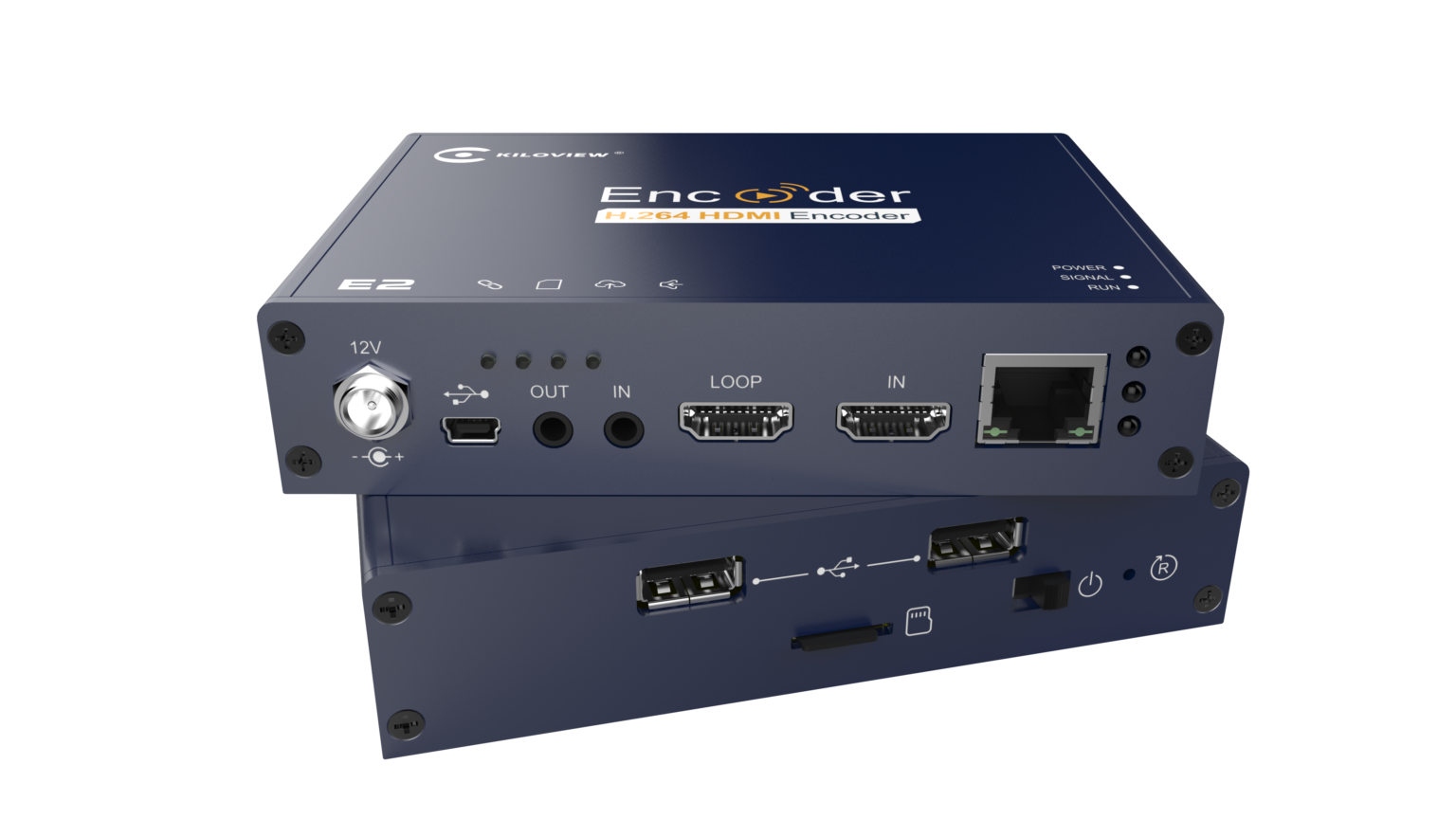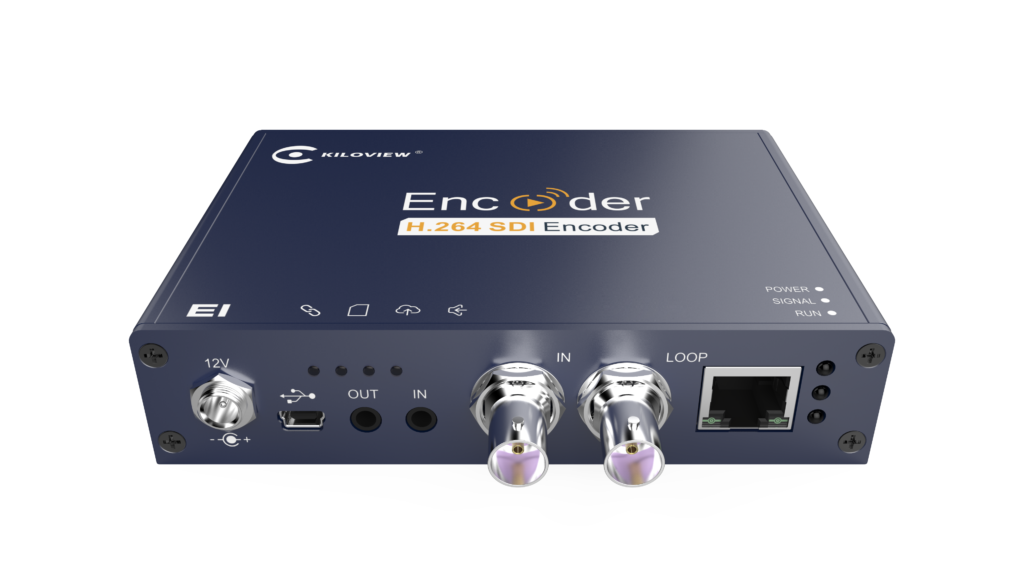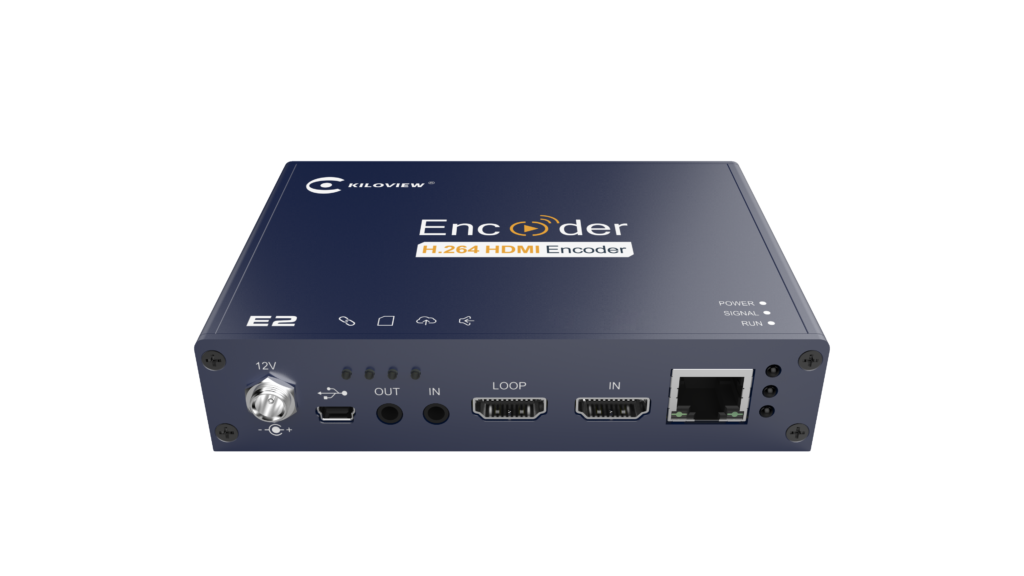News
1 Jun 2021
Road Test: Kiloview E1 and E2 Video Encoders

Subscribe to CX E-News
Dave Evans is the owner and operator of Digital Vision Live. Based in Nelson, Digital Vision Live provide live streaming platforms, live production, live stream hosting, remote video production, simulcasts, hardware and software, with years of experience working on budget conscious productions delivering content across the public network, for a mix of corporate, sporting, and creative clients. Digital Vision Live aim to bring the latest live streaming technology at a price point that’s affordable for everyone.
In lockdown last year, with time on our hands, we went looking for a way to provide remote production with minimal infrastructure on-site along with cloud-based production. We conducted initial tests using some great SRT encoders and decoders, which worked very well, but the pricing was out of the ballpark for the majority of our clients. Eventually we discovered Kiloview and put some equipment out on trial. We soon learnt that they were not only affordable, but also very robust. We now almost exclusively use Kiloview’s very straightforward SDI and HDMI models, the E1 and E2.
Application
A typical use case for the E1 and E2 is remote production. This sees us sending just the camera operators to a venue with pre-configured encoders. They plug in their cameras, connect to Ethernet ports, and then they’re streaming back to our endpoints.
The camera operators are the only personnel we send on site. We receive their SRT feeds on an AWS instance in the cloud, where we run a VMix switcher. We work out the latencies required for the connection and to match cameras so that replays and switching between cameras are visually acceptable. We are talking hundredths of milliseconds here.
Once up and running, the encoders will stream the camera content for a whole day if needed, for example, for a volleyball tournament. Some of the sporting events we stream are often 13 or 14 hours long. Our E1s and E2s just keep on streaming, and with SRT their latency never changes. Our graphics and scoreboard packages are also available as a remote service and can be controlled courtside by the official scorers, taking responsibility and keeping our and their onsite footprint as small as possible. Remote commentary, connecting remote producers and interested parties are all possible with this workflow. We then send the programme mix to whichever streaming platform the client is using or to our own digitalvision.live platform, where it’s published to the public.
Another use case is for sports clients who want autonomy over their streaming, running their own cameras and production. They just want a simple way of streaming, adding graphics and scores live at courtside and then having those elements combined and presented to their viewers with no additional postproduction. Our workflow and platform manage that perfectly. We pre-programme the encoders and send them to our clients. They plug in, switch on, and away they go. If necessary, we can log into the E1 and E2 remotely to change settings or update firmware but rarely have to as the encoders are robust and just work, even in 24/7 streaming situations.

Pricing and Quality
The price point of the E1 and E2 is key; they are very affordable units. As we know in broadcast, lower price often means a sacrifice, usually durability and robustness. Cheaper units can overheat or need to be reset after a certain period of operation. While the Kiloview price point is excellent, it’s also backed up with durability. The componentry used is a higher quality compared to a lot of other devices at similar and even more expensive price points. One product we trialled was also affordable and was from a reputable brand, but there were lots of issues, particularly if they ran for long periods of time. Another unit we tested was top-of-the-line, worked beautifully, and was extremely well-made, but came in at more than 10 times the price of the Kiloview.
Changes and Improvements
We would like to see some changes in the Kiloview software interface. Our biggest issue, which is really a very small annoyance, is that you can’t currently give the encoder’s stream endpoint configurations a customisable name in the interface e.g. the IP address it is streaming to, or a human readable name until that endpoint is active. You can set up lots of endpoints and turn them on and off as you need them, but without a label for in-active endpoints, it can be hard to tell which one is which. Once you’ve turned an endpoint on you can see its IP address, so you know which one it is, but before turning it on there’s no identifying info. We have communicated this to Kiloview, and they’ve taken it on board, so I’m sure we’ll see that capability in a firmware update soon.

Service and Support
Kiloview have been incredibly responsive to requests for changes and updates. For example, we needed a feature of SRT implemented called Stream ID, which makes it easy to identify streams coming in, and they added that almost overnight. Before SRT version 1.4, it wasn’t even part of the specification. The timely fashion of that implementation was really something, and is almost unheard of in this industry. If something is easy or can be done without major changes, Kiloview are great at accommodating requests.
Kiloview run a solid web database with all the latest firmware available for download. As a customer, you will get an email letting you know when new firmware is available for your device. You can connect directly to the device, or use a web login. There’s also a nice feature where you can use a configurable URL that you can adapt to your network specifications for remote connection. Start the procedure, then the unit reboots itself and presents you with updated firmware.
Conclusion
In choosing a video encoder that’s right for your application, it’s horses for courses. Certain devices lend themselves to certain workflows. If you want to move video and audio around quickly, affordably and without too many technical hoops to jump through, you can easily configure a Kiloview encoder to work with a multitude of protocols. Our favourite protocol is SRT, but if your client hasn’t even heard of it, conventional RTMP streaming is also available. There is also RTP, RTSP and others. Just paste in the URL to Facebook, YouTube or a custom service, and away it goes.
Product Info: en.kiloview.com
Distributor Australia and New Zealand: www.adimex.com.au
Kiloview E1 and E2 – The Specs
E1
Video input: 1x BNC SDI
Video loopout: 1x BNC SDI
E2
Video input: 1x HDMI
Video loopout: 1x HDMI
Both Models
Analog audio input: 1x 3.5mm jack
Analog audio output: 1x 3.5mm jack
USB interface: 2x USB 2.0 Type-A; 1x USB 2.0 Mini-USB
1x Micro SD/TF Card storage interface
Network: RJ-45 Ethernet
Video encoding: H.264/ AVC High/ Main/ Baseline profile (up to Level 5.3) ; Motion-JPEG
Audio encoding: AAC/G.711
Encoding latency: ≤67ms
Subscribe
Published monthly since 1991, our famous AV industry magazine is free for download or pay for print. Subscribers also receive CX News, our free weekly email with the latest industry news and jobs.




